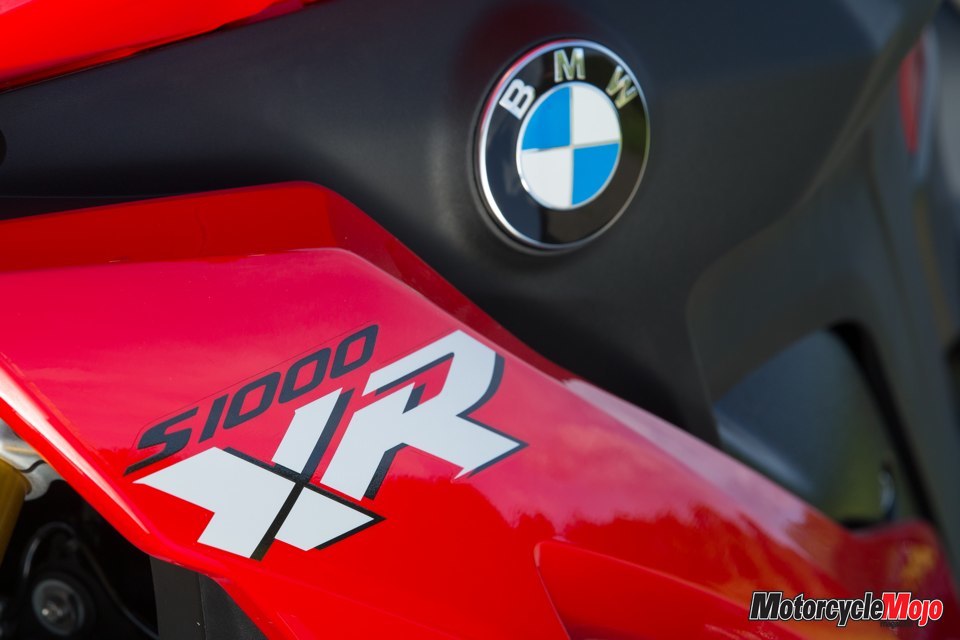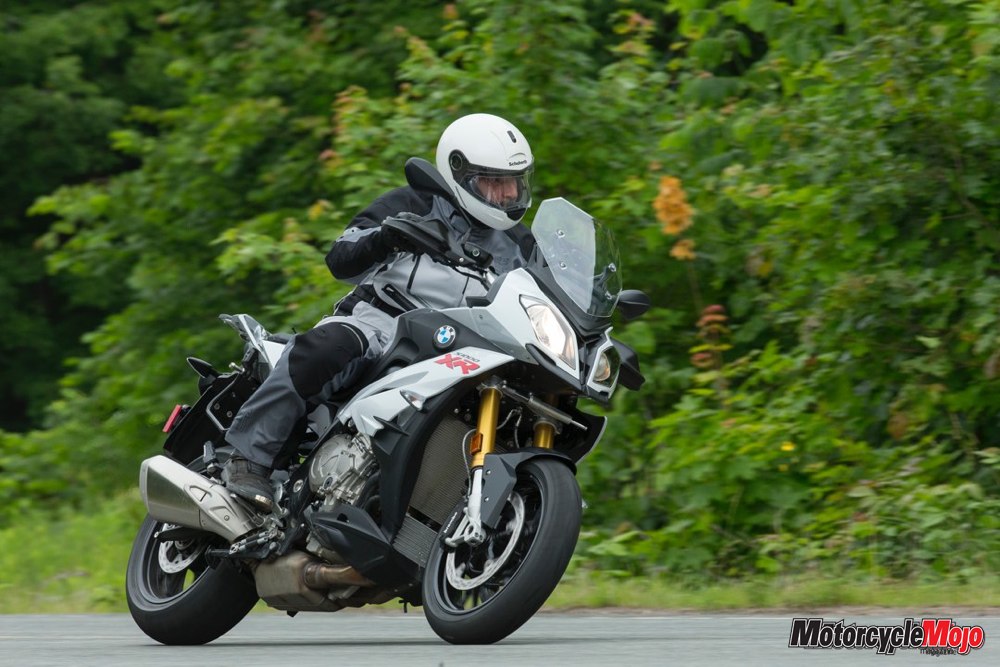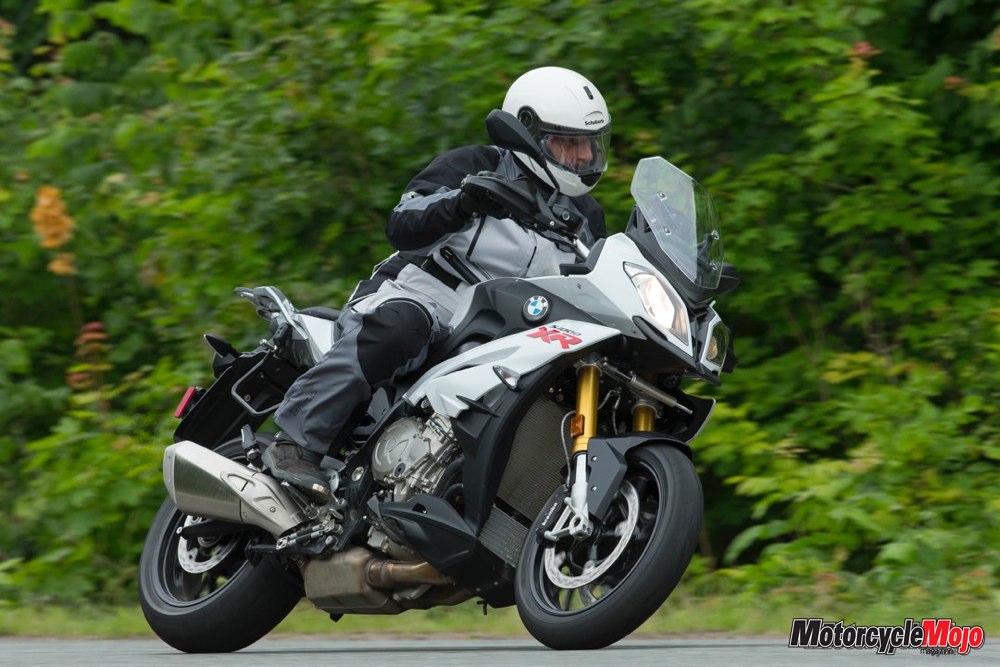Adventuring into Italian Territory
A new model from BMW falls into the adventure sport category to take on its closest rival, the Ducati Multistrada
BMW already owns the adventure-touring category with its tried-and-true R1200GS. There are, however, a number of machines from Japan, Italy and the U.K. that are vying for a slice of that market share. There’s even a subcategory that has arisen in the last few years of sportier adventure-type bikes that use 17-inch front wheels instead of the more off-road-capable 19- or 21-inch fronts, such as the Kawasaki Versys 1000, the Yamaha FJ-09 and even the MV Agusta Turismo Veloce. In BMW’s literature, this category is described as “adventure sport.” The Ducati Multistrada dominates this segment, featuring superbike-like power and handling in a much more versatile package than in its Panigale.
This adventure sport category is designed to woo sportbike riders who are getting older and taking longer rides, on more comfortable alternatives, without sacrificing performance.
The 2015 S1000XR is the latest machine to enter this category and is based around the S1000RR inline-four. According to BMW, it’s the fourth model based around the 999 cc engine, following the S1000RR, the high-performance HP4 (counted as a separate model by its maker) and the naked S1000R.
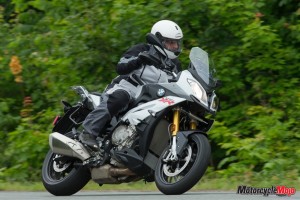 BMW recently held the S1000XR press intro, and for a refreshing change of pace, invited North American press to the Muskoka region of Ontario. We were based out of the spectacular Rosseau Muskoka Resort & Spa, located right on the shores of Lake Rosseau. If you’ve ever ridden here, you know the Muskoka roads surrounding this area can be as sinuous as in the western U.S. or Europe, though maybe a bit bumpier. This was the ideal location to put the XR through its paces.
BMW recently held the S1000XR press intro, and for a refreshing change of pace, invited North American press to the Muskoka region of Ontario. We were based out of the spectacular Rosseau Muskoka Resort & Spa, located right on the shores of Lake Rosseau. If you’ve ever ridden here, you know the Muskoka roads surrounding this area can be as sinuous as in the western U.S. or Europe, though maybe a bit bumpier. This was the ideal location to put the XR through its paces.
From a distance, it’s not too difficult to mistake the S1000XR for the Ducati Multistrada, as it shares a similar silhouette, with a pointy beak and a deeply stepped seat. From the front, it resembles the S1000’s face, but instead of using asymmetrical headlight lenses, it has asymmetrical headlight reflectors.
Creature Comforts
 The riding position is relaxed and upright, with an easy reach to the tall, wide handlebar, where you’ll find sturdy hand guards that offer a bit of wind protection. There’s ample legroom, as the foot pegs are mounted lower and farther forward in relation to the seat than on the S1000R. The windscreen is manually adjustable to two positions by pulling it up or pushing it down, but unlike some other BMWs (like the R1200GS), the 840 mm seat height is not adjustable, though you do have the option of getting it with a 20 mm lower seat, at no extra cost. The standard seat, although supportive, is cupped and holds you in one place, so you can’t change positions.
The riding position is relaxed and upright, with an easy reach to the tall, wide handlebar, where you’ll find sturdy hand guards that offer a bit of wind protection. There’s ample legroom, as the foot pegs are mounted lower and farther forward in relation to the seat than on the S1000R. The windscreen is manually adjustable to two positions by pulling it up or pushing it down, but unlike some other BMWs (like the R1200GS), the 840 mm seat height is not adjustable, though you do have the option of getting it with a 20 mm lower seat, at no extra cost. The standard seat, although supportive, is cupped and holds you in one place, so you can’t change positions.
Wheel travel has been increased to 150 mm at the front and 140 mm at the rear, compared with the S1000R model’s 120 mm at both ends. If you want to lower the bike further, an optional lower suspension is available ($245), which reduces travel by 30 mm at both ends. Behind the seat there is a handy luggage rack, which is just one of the features that emphasizes the S1000XR’s increased versatility over the other S1000 models.
Engine specs are identical to those of the S1000R, which uses a detuned version of the S1000RR engine; in the XR, it also produces 160 peak horsepower and 83 ft-lb of torque. All of BMW’s electronic rider aids are available in optional packages, like the Dynamic Package ($1,200 – includes lean-sensing traction control, shift assist, Pro riding mode and lean-sensing ABS), and the Touring Package ($1,625 – includes ESA [electronic suspension adjustment], GPS mount, centre stand, luggage rack and brackets, and heated grips). Our test bikes included both packages.
If you opt out of these packages, you get ASC (traction control without lean-sensing capability), standard ABS, and manually adjustable suspension that features compression and rebound damping at the fork and rebound damping and preload at the shock.
BMW has simplified things somewhat within its electronically adjustable suspension (distinguishable from the standard suspension by its gold-coloured forks). The ESA now has fewer selectable modes – there are still three selectable preload settings – than on other BMW models; the modes include only Road and Dynamic, whereas other BMWs have Comfort, Normal and Sport.
Multi-Mode
 There are two standard ride modes, Rain and Road, each one altering throttle mapping, stability control and ABS settings for either wet or dry conditions. Two more ride modes, Dynamic and Dynamic Pro, are available with the optional coding plug, which is included in the Dynamic Package. These modes further enhance throttle response, while adjusting the dynamic traction control and ABS Pro settings, as well as ESA settings, if the bike is so equipped.
There are two standard ride modes, Rain and Road, each one altering throttle mapping, stability control and ABS settings for either wet or dry conditions. Two more ride modes, Dynamic and Dynamic Pro, are available with the optional coding plug, which is included in the Dynamic Package. These modes further enhance throttle response, while adjusting the dynamic traction control and ABS Pro settings, as well as ESA settings, if the bike is so equipped.
The brakes are supersport-spec up front, with two four-piston radial calipers and 320 mm discs, while at the rear is a twin-piston caliper and 265 mm disc; they are non-linked. Like the traction control, the ABS can be turned off.
Our test bikes were brand new, with some showing only one mile on the odometer (U.S.-spec bikes), so they were in break-in mode, meaning their engine rev limiters were set to 9000 rpm instead of 12,000. This also meant we didn’t have access to the full 160 hp, which arrives at 11,000 rpm.
Firing up the engine reveals a rather throaty four-cylinder hum, and clicking the transmission into first gear requires a very light touch at the shifter. In fact, the transmission is remarkably light-shifting, which is why I resorted to using the clutch rather than the clutchless gear-shift assist, which firms up shifting effort unless you’re in the upper revs at speed.
As anticipated, the engine is very strong, pulling progressively harder as revs build. Even though our bikes cut off the fun at 9000 rpm, that was still enough oomph to achieve some unmentionable speeds along the more open back roads. The engine is mildly buzzy, with some vibration coming through the handlebar and seat beginning at about 5000 rpm, and getting more prominent as revs pick up from there, though it never reaches an intolerable level.
Losing Traction
Turning off the traction control is merely a matter of holding the ABS button down for a second or so (the button serves double duty, turning off the ABS, too), which is the way I rode the bike for most of the day, given we would alternate between paved and unpaved roads, and it’s recommended traction control be turned off on dirt.
Steering is neutral yet ultralight, thanks to the added leverage offered by the wide handlebar, which fortunately doesn’t induce weaving at speed. At 228 kg wet, the XR weighs slightly less than the 232 kg Multistrada, and it feels light when flicking it through a series of turns. Transitions between tightly spaced turns are effortless, the bike’s height doing little to hamper the manoeuvre. Rolling on the throttle in fourth gear, over some of the sharp crests along Highway 518 east of Parry Sound, produced instant wheelies (accomplished by keeping the TC off) that continued until the throttle was shut.
My major gripe with this bike is the “ESA system. I usually – and rightly so – rave about BMW’s electrically adjustable suspension, but with only two settings on the XR, it fell short of an ideal setup for our bumpy Canadian tarmac. Despite an elevated sporting pace, I rarely found a need to switch to the firmer Dynamic setting. Suspension action isn’t harsh, but it’s firm, and on BMWs with a wider range of adjustability (as well as on the Multistrada), you can find a more comfortable setting for the rough stuff. Maybe the standard suspension has a wider range of adjustability, but none of the bikes had that option on hand.
We rode a fair amount along some unpaved roads (which are quite a bit more entertaining than blacktop), and because of the previous day’s rain, there was no dust and just the right amount of traction for the Bridgestone T30R sport-touring rubber to make the ride an absolute giggle.
Although I would have preferred a softer suspension setting, Road mode worked well enough to blast along these hard-packed dirt roads at a pace that would have been considered fast even on pavement. The Bridgestones actually had surprisingly good grip in these conditions, and breaking the rear loose through corners was a matter of winding in more throttle, though when it did break loose, it did so rather abruptly, requiring more throttle control than if the torque spread were wider, as on the Multistrada. These unpaved roads were smooth, however, and throwing any bumps into the mix would probably have overwhelmed the firm suspension.
Fairing Well
This BMW offers very reasonable wind protection up to about helmet level with the windscreen in the higher position; our bikes were also equipped with heated grips, making them well suited to handle a wide range of weather. Fortunately, we managed to avoid the rain that had been lingering in the area over the previous couple of days, but I’m sure the XR would have handled it well.
BMW has entered a relatively new segment with a new bike, but it will not have the same impact that the S1000RR had when it stormed into the open supersport segment. That bike redefined the performance baseline, as well as set the standard for electronics in the class. The XR offers an alternative take on the adventure class; it’s a great bike, but it’s not outstanding. It doesn’t dominate in output (the Ducati produces more torque), and it’s not particularly distinguishable in styling, say the way the BMW R nineT is.
Its closest rival, the Ducati Multi-strada, matches the BMW’s 160 hp output, but surpasses it in torque, at 100 ft-lb. It’s also more tech-laden, with more ride modes and a wider range of adjustability within its optional electrically adjustable semi-active suspension. The Multistrada is also more expensive, starting at $18,995.
The S1000XR performs very well, is comfy and sporty, and comes in at a reasonably affordable price point in the class, and makes for a good introduction to BMW inline-fours.”
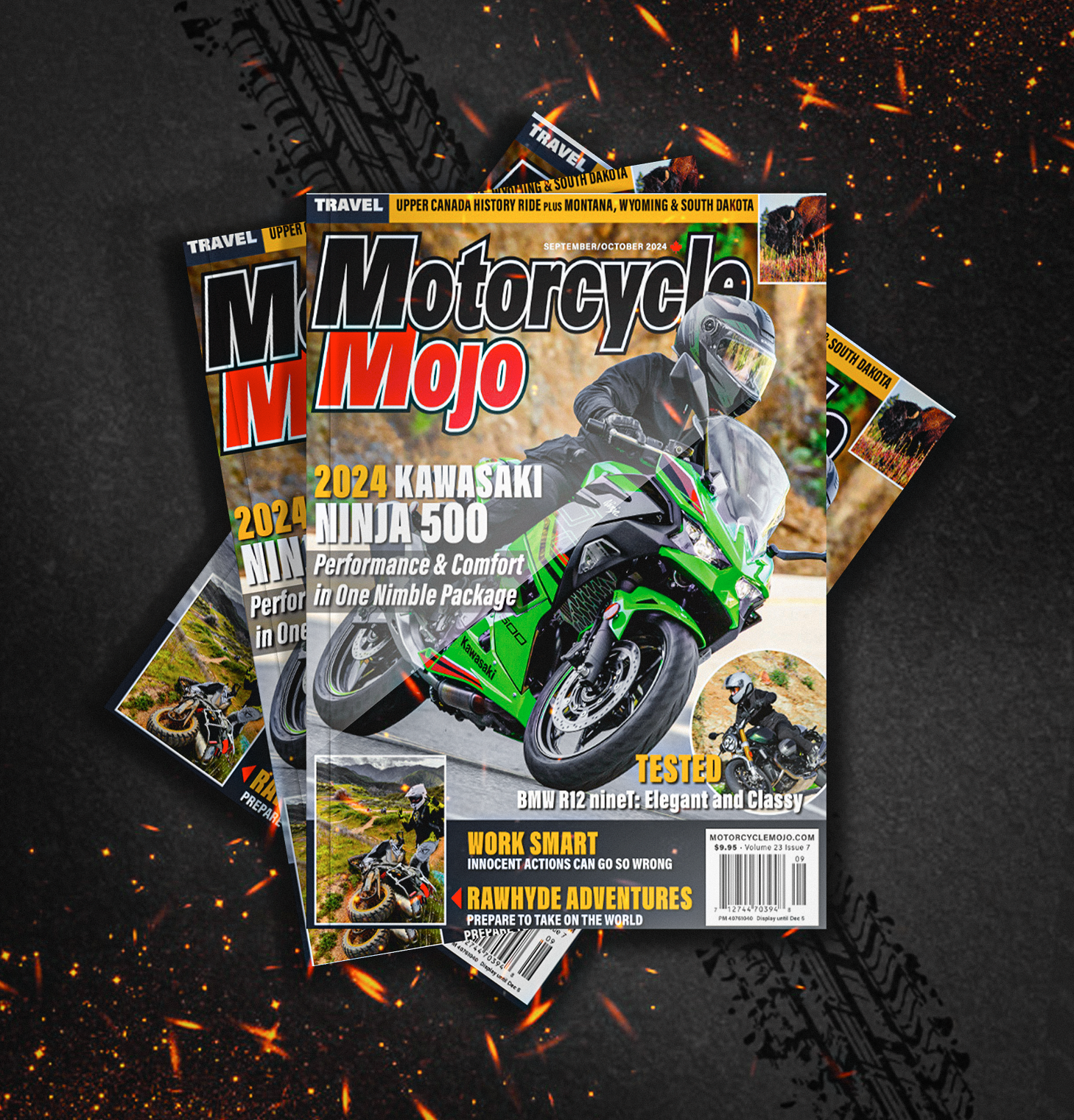
Thanks for Reading
If you don’t already subscribe to Motorcycle Mojo we ask that you seriously think about it. We are Canada’s last mainstream motorcycle magazine that continuously provides a print and digital issue on a regular basis.
We offer exclusive content created by riders, for riders.
Our editorial staff consists of experienced industry veterans that produce trusted and respected coverage for readers from every walk of life.
Motorcycle Mojo Magazine is an award winning publication that provides premium content guaranteed to be of interest to every motorcycle enthusiast. Whether you prefer cruisers or adventure-touring, vintage or the latest models; riding round the world or just to work, Motorcycle Mojo covers every aspect of the motorcycle experience. Each issue of Motorcycle Mojo contains tests of new models, feature travel stories, compelling human interest articles, technical exposés, product reviews, as well as unique perspectives by regular columnists on safety or just everyday situations that may be stressful at the time but turn into fabulous campfire stories.
Thanks for considering a subscription. The Mojo team truly appreciates it.






